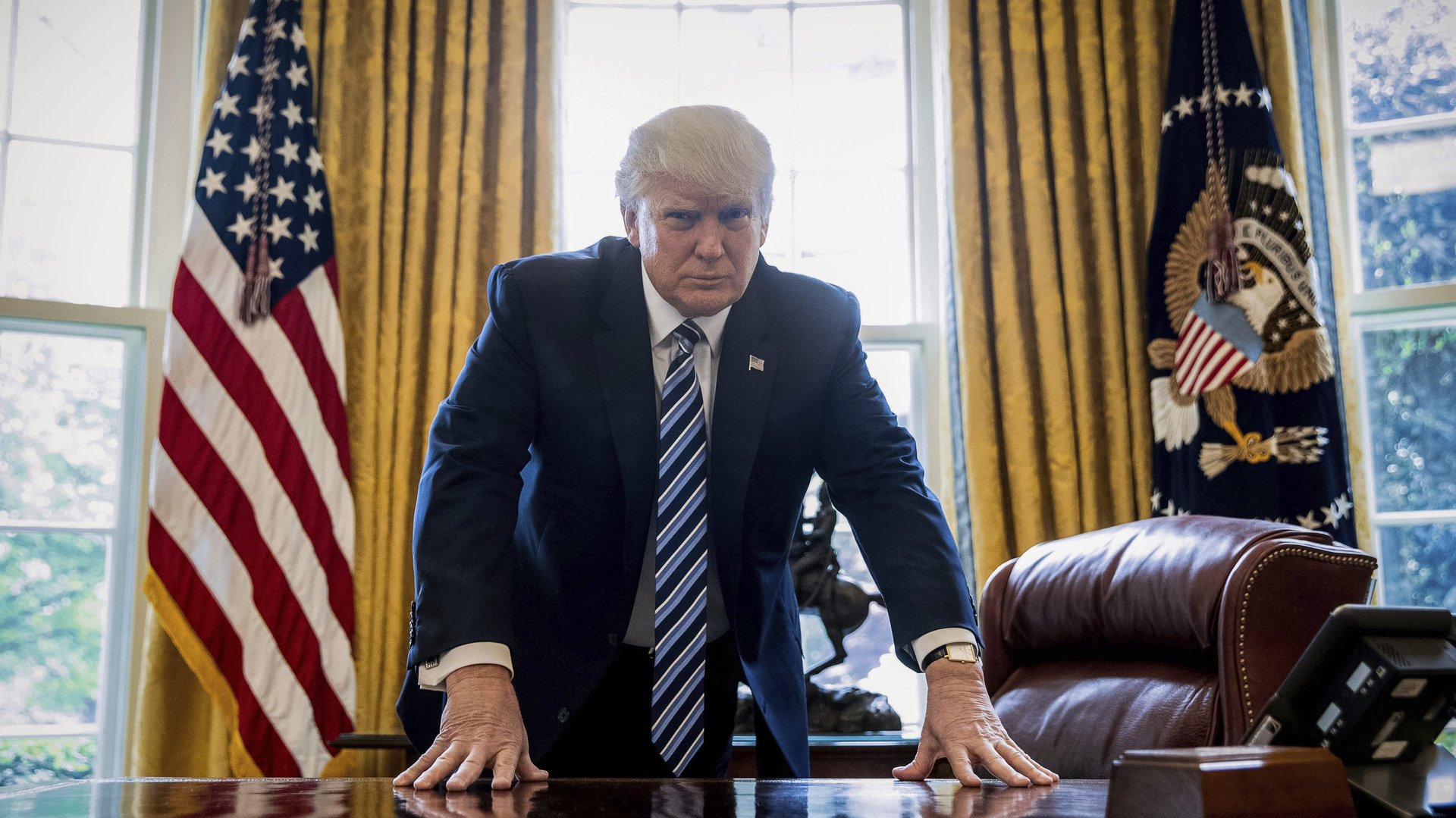Trump’s clearest achievement so far is based on threats, not actions
US president Donald Trump can’t point to many tangible achievements as he closes in on his 100th day in office this Saturday but he has been remarkably successful at curbing illegal immigration.


US president Donald Trump can’t point to many tangible achievements as he closes in on his 100th day in office this Saturday but he has been remarkably successful at curbing illegal immigration.
The number of people caught crossing the US-Mexico border, a proxy for illegal immigration, nosedived during his first couple of months in office. In March, Border Patrol apprehensions fell to their lowest level in nearly two decades. The decline is all the more impressive considering that March is historically when crossings start ramping up due to better weather, not dropping off.
The trend could be fleeting. That’s because what appears to be stopping immigrants from coming into the US is Trump’s hostile attitude towards them, not his tough new border enforcement policies. (At this point, most of them, including his proposed wall, remain intentions with no firm funding and uncertain congressional support.)
“This president is all messaging,” said Muzaffar Chishti, an expert at the Migration Policy Institute, or MPI, during a panel on Trump’s first 100 days organized by the group. “He knows how to message a thing.”
Indeed, many provisions in his two January executive orders on immigration seem to be designed for PR purposes. They call for a flurry of reports on undocumented immigrants in the country, their crimes, and the jurisdictions that, in the administration’s view, have failed to cooperate with immigration authorities. The stated goal is to inform the public, though critics say the real aim is to inflame anti-immigrant sentiment.
Those kinds of measures also happen to be the most easily achievable among Trump’s long immigration-enforcement wish list. It may take years to hire the 15,000 additional Homeland Security officers Trump has requested, but the Victims of Immigration Crime Engagement Office launched this week. Among its responsibilities: studying and disseminating “the effects of the victimization by criminal aliens.”
The effects of Trump’s “keep out” message, however, could crumble in coming months if he can’t fulfill his threats. And for all his bravado, Trump faces serious obstacles in carrying out his vision of wiping out illegal immigration; they will take time and resources to overcome.
One major bottleneck is the chronically backlogged immigration court system. There are currently more than 570,000 pending cases, according to Syracuse University’s Transactional Records Access Clearinghouse, or TRAC, which compiles immigration data.
The Department of Justice, which oversees immigration courts, has been deploying judges to border detention centers to speed up cases there, recently swearing in 14 new judges. Even with the additions, it would take immigration courts more than two years to get through the existing backlog, never mind the spate of new cases that are likely to emerge from Trump’s harsher immigration policies. During that time, the government will either have to pay to house and feed the defendants—or release them while their cases unfold, like former president Barack Obama did.
Though Trump has vowed to end that practice, dubbed “catch-and-release,” he first has to find the space to hold immigrants, and the money to pay for it. A Homeland Security report leaked to the Washington Post earlier this month notes that the agency won’t be able to secure additional beds until funding is assigned for them. So far, Trump has been able to double Obama’s detention rate of people with cases in immigration court to roughly 60%, per TRAC. But the remaining 40% were either released or never detained.
Although he’s cracked down on immigrants already in the US as promised—arrests jumped by more than 30% in his first two months in office compared to the same period last year—deportations are down slightly, by 1.2%.
If those numbers don’t start growing significantly, more immigrants could venture north again. When they arrive, they’ll be greeted by the same rickety, pre-Trump immigration system—at least in the foreseeable future.